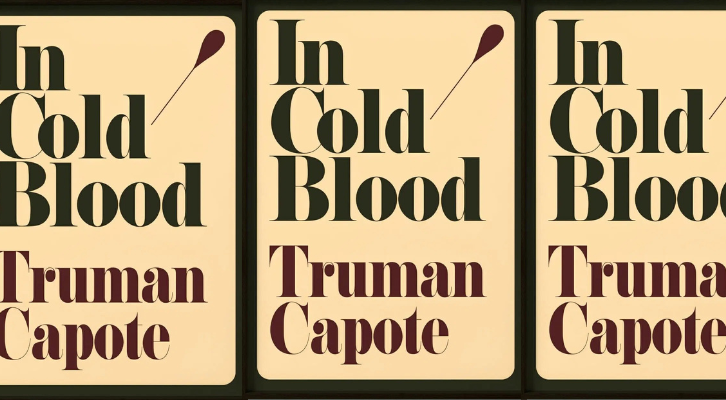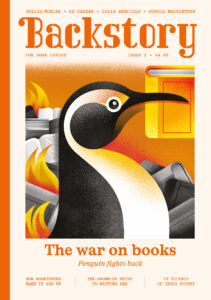
What Truman Capote’s In Cold Blood Reveals About Its Author's Intentions
Rachael Hanel on Teaching a True Crime Classic to Incarcerated Women
On a sweltering August day in 2022, I enter the women’s Federal Correctional Institute in Waseca, Minnesota, one of 29 federal prisons for women in the United States. It’s a low-security facility housing approximately 800 women, convicted of a variety of crimes ranging from tax evasion and money laundering to drug possession and homicide.
I’m here to teach a college course: Ethics in Literature, with a focus on works of nonfiction. We’ll start with Truman Capote’s classic In Cold Blood.
Prior to the course, it had been years since I had read the book. I remembered the main storyline: the murder of four members of the Clutter family in Holcomb, Kansas, on November 15, 1959, and the pursuit, capture, and eventual execution of the killers, Richard Hickock and Perry Smith. But what I hadn’t remembered: how much of the book paints an empathetic portrait of Smith.
With intent, Capote portrays Smith as a human first, then a criminal.
Smith first appears just a few pages into the book. Capote introduces him as an adventurer, a world traveler, flitting between Alaska, Hawaii, Japan, and Hong Kong. We learn that he likes to write, draw, and sing: he envisions himself as an entertainer and has already thought of a stage name: Perry O’Parsons. Capote describes him: “dark, moist eyes”; “pink lips and a perky nose”; “a quality of roguish animation.”
Capote waits until the end of the book to reveal the gruesome facts of the crime. Only after we’ve read a detailed description of Smith’s backstory do we learn that Smith was the shooter. With intent, Capote portrays Smith as a human first, then a criminal.
*
The federal facility in Waseca, like so many prisons in the United States, sits on the outskirts of a small town in a rural area, far away from an urban center. We build our prisons out of sight, making it easy to ignore the humans inside the walls.
The classroom in the Waseca prison looks like any other classroom. Students sit two to a table. There’s a whiteboard at the front of the room. When I walk in, fourteen sets of eyes focus on me. The women smile; the room teems with warmth and energy. To me, these women are students first and foremost. I don’t care what they’ve done to get here, and I don’t need to know.
Truth be told, I did not see the irony of bringing a true crime book into a prison class until after the class started. I had viewed the book solely in terms of ethics in writing nonfiction. The book violates several tenets of traditional journalism: sources aren’t clear, Capote recreates reams of dialogue, he surmises what members of the Clutter family were thinking on their last day, and the final scene comes straight from Capote’s imagination.
But immediately, students grasp the extraordinarily full, complete portrait Capote paints of Smith. A traditional reporter works to keep a line between professional and personal. But by all accounts, Capote developed a close bond with Smith.
According to many people who knew Capote, he saw something of himself in Smith. Both were short. Both endured brutal childhoods featuring parental abandonment. Both were intelligent with a propensity for wordsmithing. Both were gay.
To this day, the exact nature of Capote’s relationship with Smith is unclear. It may have been nothing more than manipulation on Capote’s part, the writer sweet-talking the young man behind bars, plying him with gifts and compliments, helping with legal matters, all in a bid to get Smith to tell his dramatic story. Others have claimed that Capote and Smith fell in love.
Whatever the truth, it subverts the traditional narrative. The women I teach expect a true crime narrative to focus on the victims, but the Clutters only make an initial appearance. The family is almost only a vehicle to get at the real story, that of Smith. “Is it ethical for Capote to portray Smith and Hickock with humanity? They are convicted killers, after all,” I ask. I hear a chorus of “yes” and see the vigorous nodding of heads.
In effect, Capote gave readers the opportunity to see Smith beyond his label as a criminal.
These women know what it’s like to be labelled. For them, it’s as if time stopped when they were sentenced. To society, they have ceased being a friend, mother, sister, daughter. Any good they have done before is erased. Like fossils encased in amber, they are criminals for all eternity.
I taught the class again the next semester, this time at a state women’s prison about 20 miles outside of Minneapolis. This group of women also latched onto the relationship between Capote and Smith and again, we had engaging conversations about portraying those convicted of crimes with humanity.
I asked one woman from the class to tell me what thoughts the book brought up for her. She wrote: “The worst punishment that we can have is when society stops considering us as human beings and become labelled as criminals, inmates, felons, ex-offenders.”
In effect, Capote gave readers the opportunity to see Smith beyond his label as a criminal. George Garrett, writing in Virginia Quarterly Review, says Capote presents Smith with a “deeply dimensional sympathy.”
I see some of myself in the women I teach. They are smart and funny, almost all of them avid readers. One woman is writing a memoir. They have made poor choices. I have, too. I have not committed a crime, but I have hurt people. I have not killed a man, but I have killed a man’s spirit. I do not want to be defined for only those choices. I do not want the lowest part of my life to be the only thing people know about me.
After teaching the book for that first time in the Waseca prison, I went back to re-read Capote’s epigraph. Translated from the French, François Villon writes in Ballade des pendus:
Brothers, men who live after us,
Let not your hearts be hardened against us,
Because, if you have pity for us poor men,
God will have more mercy toward you.
__________________________________

From Backstory Magazine, the second issue of which is now on sale in the USA for the first time. Available from most branches of Barnes & Noble, or via direct subscription.
Rachael Hanel
Rachael Hanel is a professor of creative nonfiction at Minnesota State University, Mankato. She is the author of Not the Camilla We Knew: One Woman’s Path from Small-town America to the Symbionese Liberation Army (2022, University of Minnesota Press) and We’ll Be the Last Ones to Let You Down: Memoir of a Gravedigger’s Daughter (2013, University of Minnesota Press). Her essays have appeared in mass media outlets and literary journals such as the Minneapolis Star Tribune, Salon, Stonecoast Review, Bellingham Review and New Delta Review.



















